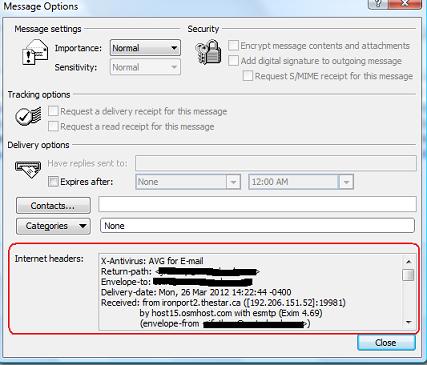Email Support
We do not offer technical support for third party email software or devices and recommend finding the vendors documentation to add and manage accounts. Any information regarding third party email software is provided for information purposes only.
If you are having any problems with your webmail or with managing your email accounts in your cPanel, please contact us directly or check official cPanel documentation here.
- Email Support Articles
- Premium Email
Email Delivery Times
Most of us expect the emails we send to be received at the other end within mere seconds. Or, worst case scenario, just a few minutes. Most of the time, this is exactly what happens.
But what about those times when that email you send doesn't arrive for hours, or even more than a day?
Well, email isn't actually guaranteed to be instant. There are several things that can cause an email to be delayed.
- When an email leaves your computer and travels along the internet toward it's destination, it usually has to travel through several different servers. If any of those servers is backlogged in emails that it's trying to process, it may just tell your email to wait until it gets caught up again.
- Some spam filters purposefully will not accept an email for a period of time. Most legitimate emails will try delivery again after a while, but many spam emails will not. This is a fairly effective way to filter out some spam, but it does delay delivery of legitimate email. These spam filters can delay receipt of email for 1 minute and up. And after delivery has been rejected, the sending server may not even try delivering again for several hours.
How To Check Where and When An Email Was Delayed
You can track the delivery path and times of an email by looking at it's header information. In most cases, this information can give you a pretty good idea of where the delay occurred.
If you need help finding the header information of an email, check out this article: http://www.abika.com/Reports/Samples/emailheaderguide.htm
(if you're using Microsoft Outlook, you can get the header information by right clicking the email in your inbox, then choosing 'message options' - the header information is located in the 'Internet Options' area of the box that pops up)

If you look carefully at the email header information, you can see when an email was sent and what time is was received and relayed on again at each server along the way. The only snag is that you do need to account for time zone differences or the fact that a server or computer might not have the right time setting.
In order to follow the path of an email, you need to read the header information from the bottom up, we'll walk through analyzing the following example later in this article...
Example Header (identifying information has been changed):
Return-path:
Envelope-to:
Delivery-date: Tue, 19 Oct 2010 17:57:24 -0400
Received: from toroondcbmts02.bellnexxia.net ([207.236.237.36]:45487 helo=toroondcbmts02-srv.bellnexxia.net)
by finalserver.com with esmtp (Exim 4.69)
(envelope-from )
id 1P8KBQ-0004Ka-Dy
for receiver@domain.com; Tue, 19 Oct 2010 17:57:24 -0400
Received: from toip54-bus.srvr.bell.ca ([67.69.240.140])
by toroondcbmts07-srv.bellnexxia.net
(InterMail vM.8.00.01.00 201-2244-105-20090324) with ESMTP
id <20101019173659.LKOJ26461.toroondcbmts07-srv.bellnexxia.net@toip54-bus.srvr.bell.ca>
for ; Tue, 19 Oct 2010 13:36:59 -0400
Received: from toip53-bus.srvr.bell.ca ([67.69.240.54])
by toip54-bus.srvr.bell.ca with ESMTP; 19 Oct 2010 13:36:51 -0400
X-IronPort-Anti-Spam-Filtered: true
X-IronPort-Anti-Spam-Result: AiQIACVsvUxDRySg/2dsb2JhbACBRYc0inaFfIc1R3LCaIMPgjsEiks
Received: from bas3-hamilton14-1128735904.dsl.bell.ca (HELO CAMA13) ([67.71.36.160])
by toip53-bus.srvr.bell.ca with ESMTP; 19 Oct 2010 13:36:49 -0400
Reply-To:
From:
To:
Subject:
Date: Tue, 19 Oct 2010 13:34:49 -0400
Organization: Org Name
Message-ID:
MIME-Version: 1.0
Content-Type: multipart/mixed;
boundary="----=_NextPart_000_0003_01CB6F92.67F021D0"
X-Mailer: Microsoft Office Outlook 11
Thread-Index: Actvs+xxxxxxxxxxxxxxxxxxg==
X-MimeOLE: Produced By Microsoft MimeOLE V6.00.2900.5931
Analyzing the Header
If you read this header from the bottom up, you can see that the email was sent from the sender at Tue, 19 Oct 2010 13:34:49 -0400
Here's the first relay from the sending computer to the first server (no delay here)...
Received: from bas3-hamilton14-1128735904.dsl.bell.ca (HELO CAMA13) ([67.71.36.160]) by toip53-bus.srvr.bell.ca with ESMTP; 19 Oct 2010 13:36:49 -0400
Here's the relay from the first server to the second server (the first server took 2 seconds to relay the email on)...
Received: from toip53-bus.srvr.bell.ca ([67.69.240.54]) by toip54-bus.srvr.bell.ca with ESMTP; 19 Oct 2010 13:36:51 -0400
Here's the relay from the second server to the third server (the second server took 8 seconds to relay the email on)...
Received: from toip54-bus.srvr.bell.ca ([67.69.240.140]) by toroondcbmts07-srv.bellnexxia.net (InterMail vM.8.00.01.00 201-2244-105-20090324) with ESMTP id <20101019173659.LKOJ26461.toroondcbmts07-srv.bellnexxia.net@toip54-bus.srvr.bell.ca> for ; Tue, 19 Oct 2010 13:36:59 -0400
Here's the relay from the third server to the final server (the third server took about 4 hours and twenty minutes to relay this email on)...
Received: from toroondcbmts02.bellnexxia.net ([207.236.237.36]:45487 helo=toroondcbmts02-srv.bellnexxia.net) by finalserver.com with esmtp (Exim 4.69) (envelope-from ) id 1P8KBQ-0004Ka-Dy for receiver@domain.com; Tue, 19 Oct 2010 17:57:24 -0400
Note that in the last relay of the email, the last server received the email at 13:36:59, then in this relay, this server did not receive that email until 17:57:24. This means that the previous server held this email for 4 hours and 21 minutes before relaying it on.
And here the final server receives the email and delivers it to the receiver@domain.com account (takes 0 seconds)...
Delivery-date: Tue, 19 Oct 2010 17:57:24 -0400 Received: from toroondcbmts02.bellnexxia.net ([207.236.237.36]:45487 helo=toroondcbmts02-srv.bellnexxia.net) by finalserver.com with esmtp (Exim 4.69) (envelope-from ) id 1P8KBQ-0004Ka-Dy for receiver@domain.com; Tue, 19 Oct 2010 17:57:24 -0400
Conclusion
Hopefully this helps to better understand email delivery a little bit. Please remember that servers are not required in any way to process and relay an email on within a specified period of time. Most servers are pretty quick at it, but things get busy from time to time. If you're finding that emails are consistently delayed, try checking out the email header information to help determine where the issue is occurring.
